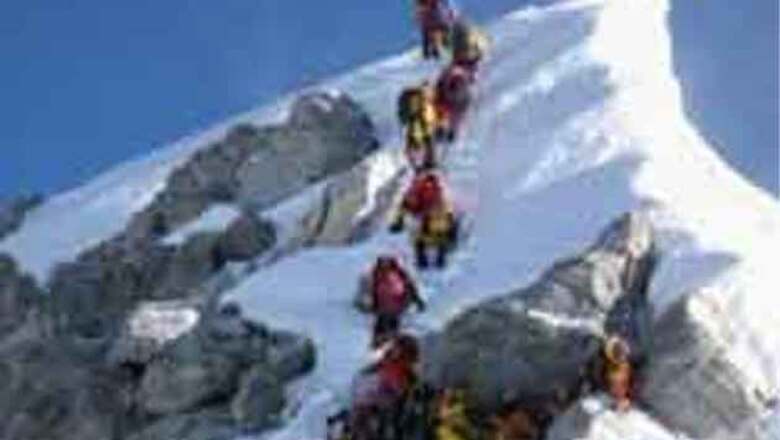
views
have remained a mystery in the history
Toronto: The greatest mystery in mountain climbing involving the death of two British mountaineers who might have climbed Mount Everest in 1924, nearly 30 years before Edmund Hillary and Tenzing Norgay reached the world's highest summit, has been solved, claim Canadian and Indian researchers.
Legendary British adventurers George Mallory and Andrew Irvine disappeared near the summit of Mount Everest in 1924, and their death has remained a mystery in the history of mountaineering for 86 years.
Mallory's body was found in 1999 during an Everest expedition, but Irvine's body could not be traced to this day.
There is belief in some mountaineering circles that the two men had actually reached Everest's summit and were on their way back to their base camp when they perished in 1924.
They say if the camera Irvine was carrying is recovered, it could contain evidence to prove that they achieved the feat almost 30 years before Edmund Hillary and Tenzing Norgay. Hillary and Tenzing reached the summit in 1953.
But now, two Toronto university professors and an Indian researcher say that an extreme plunge in barometric pressure, a blinding blizzard and sudden oxygen deprivation were the key factors in the pair's death, according to Postmedia News.
Atmospheric physicist Kent Moore of the University of Toronto, surgery chief John Semple of Women's College Hospital at the university and Indian researcher Dev Raj Sikka came to this conclusion after studying long-overlooked meteorological records and other accounts of the weather on the day the British mountaineers vanished, according to the news agency.
"The disappearance of Mallory and Irvine is one of the most enduring mysteries of the 20th century, yet throughout the debates surrounding their disappearance, the issue of the weather has never really been addressed," Moore has been quoted as saying in a summary of the study.
"Until we completed our study, the only information available was an observation by mountaineer Noel Odell, who was climbing behind Mallory and Irvine, who claimed that a blizzard occurred on the afternoon that they disappeared."
By analysing 1924 meteorological data from the Himalayas held at the Royal Geographical Society archives in London, the three researchers determined that Mallory and Irvine may have been subjected to a sudden drop in barometric pressure of as much as 18 millibars – a major weather event that would have triggered a severe storm and a substantial drop in oxygen for the climbers as they neared Everest's summit, according to the report.
"Mount Everest is so high that there is barely enough oxygen near its summit to sustain life, and a drop of pressure of four millibars at the summit is sufficient to drive individuals into a hypoxic state," Semple, an experienced mountaineer as well as a medical expert, has been quoted as saying by Postmedia News.
Given the "cumulative effects of hypoxia, fatigue and extreme cold, Mallory and Irvine would have been at the limit of their endurance as they moved along the Northeast Ridge of Everest", according to the researchers.
Their findings have been published in the latest issue of Weather, the journal of the Royal Meteorological Society.




















Comments
0 comment